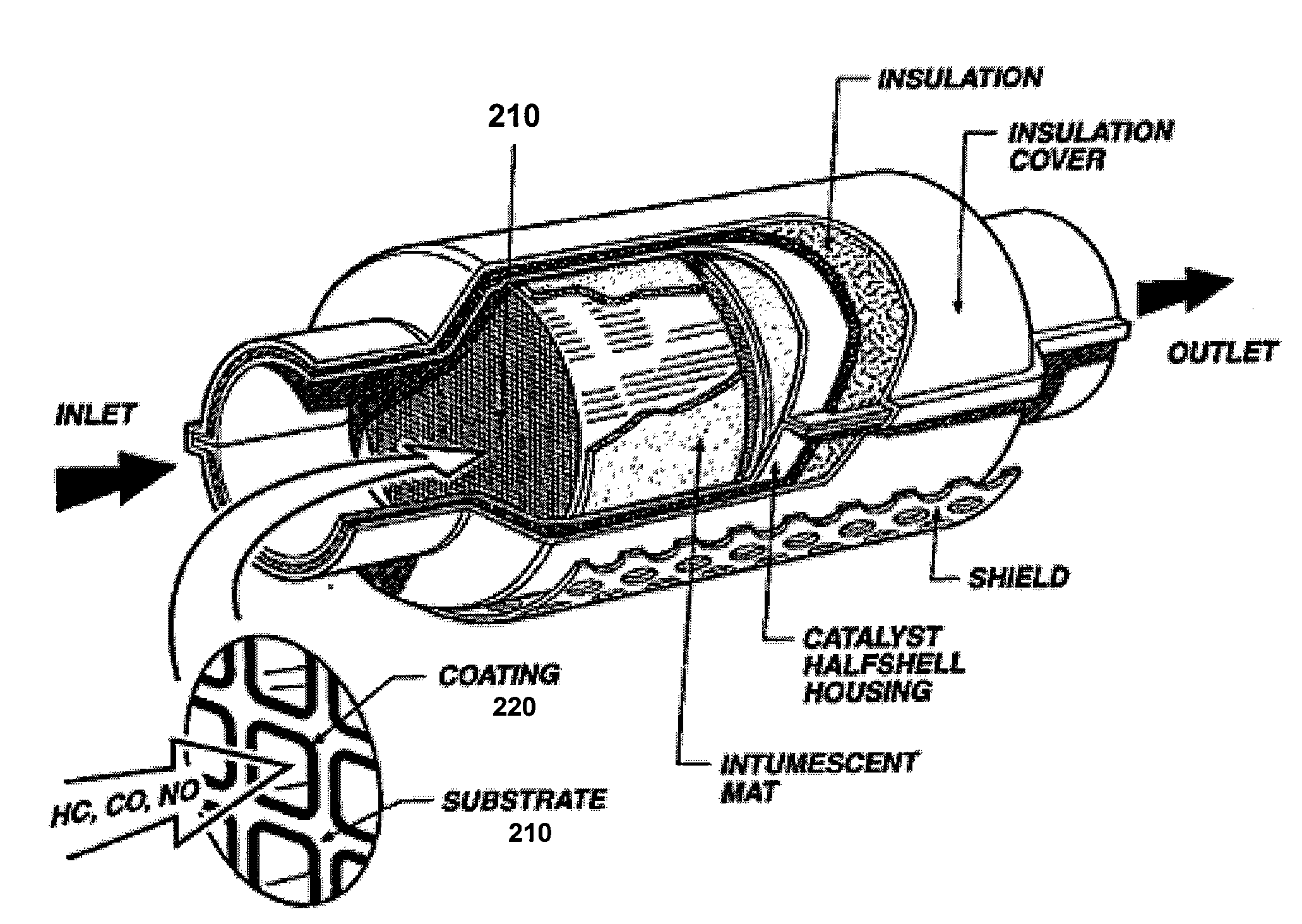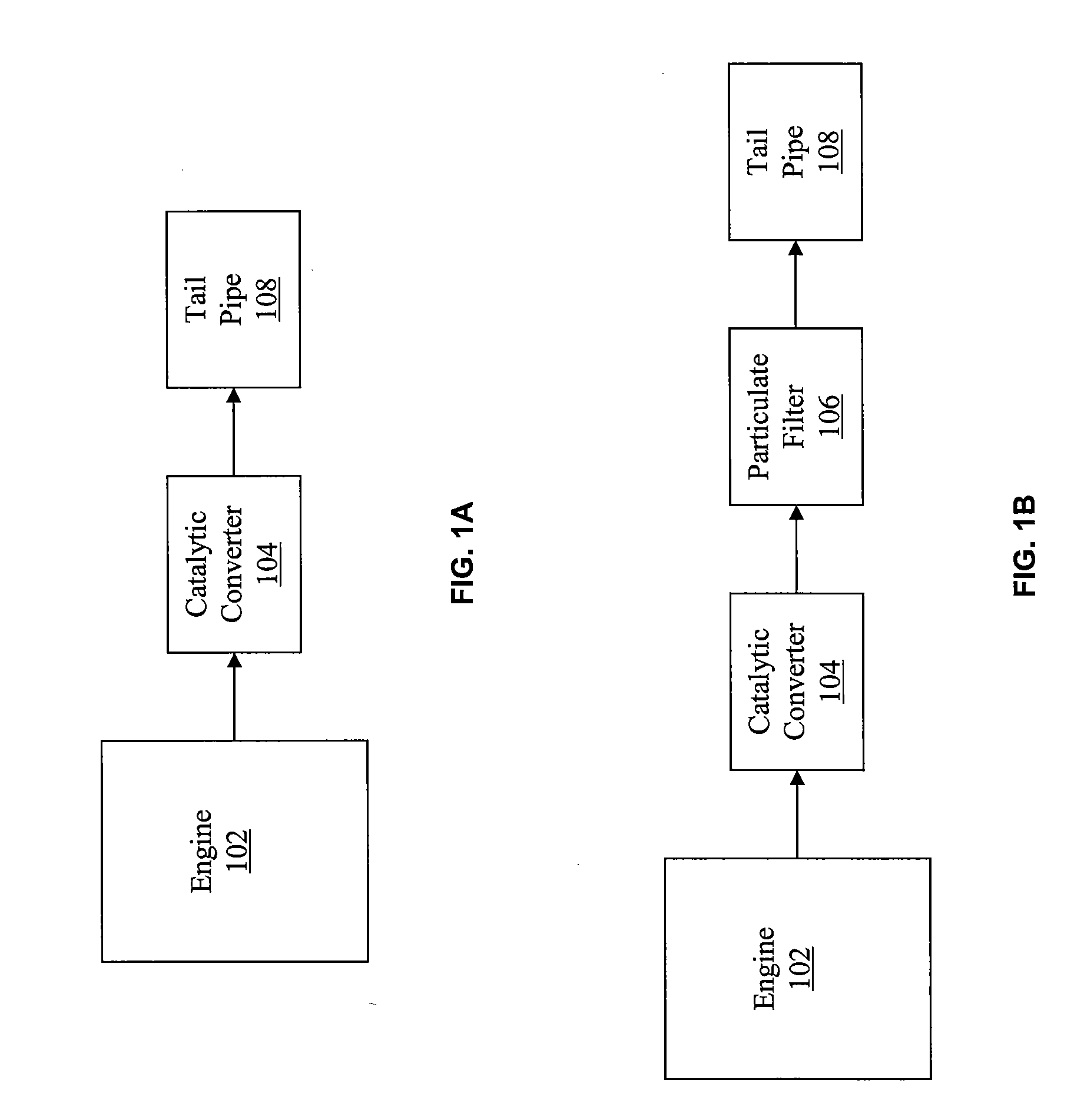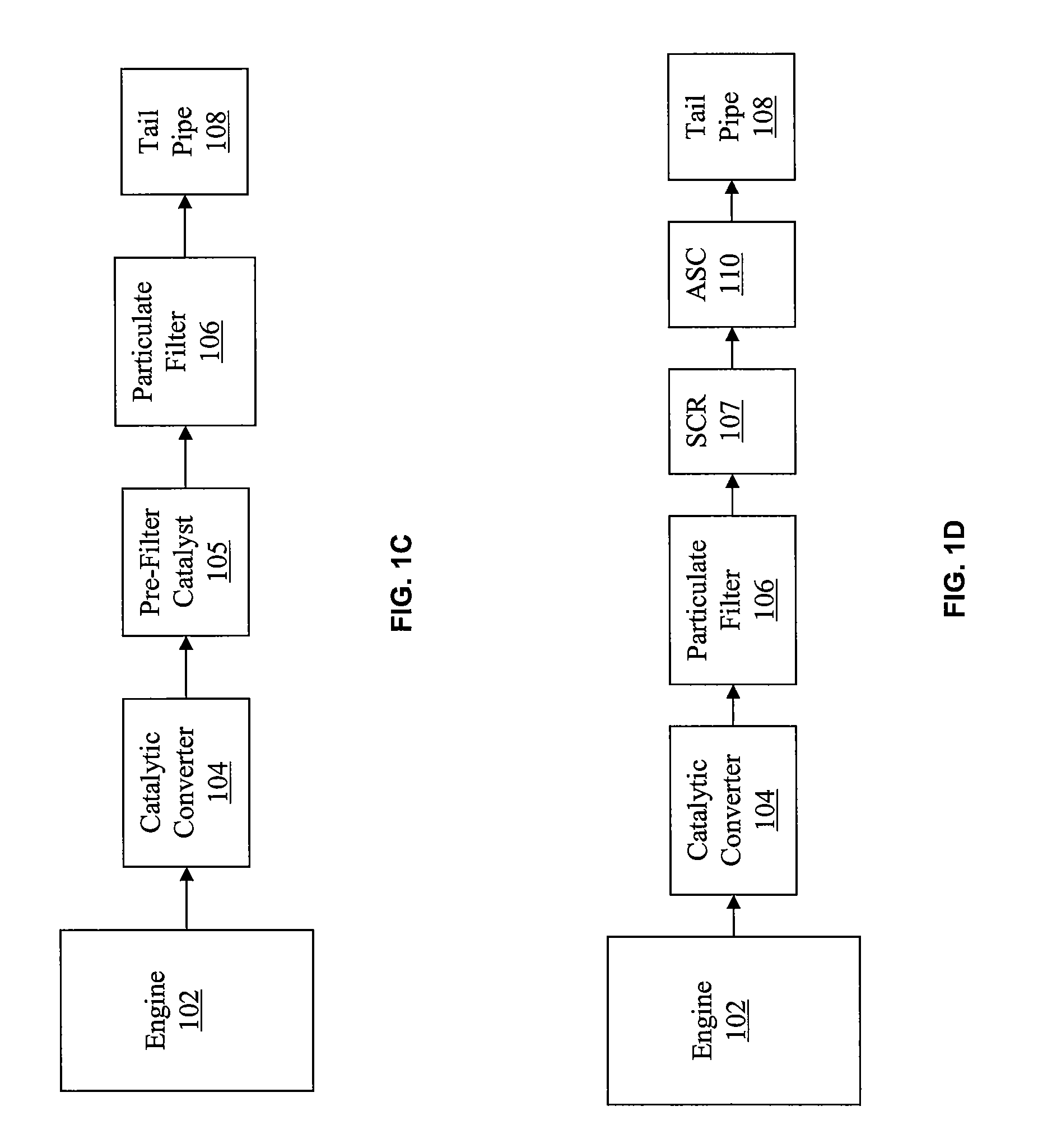Engine Exhaust Catalysts Containing Palladium-Gold
- Summary
- Abstract
- Description
- Claims
- Application Information
AI Technical Summary
Benefits of technology
Problems solved by technology
Method used
Image
Examples
example 1
Tri-Layer: PtPd (at 57.5 g / ft3) 1st Layer, Beta Zeolite 2nd Layer, PtPd (at 57.5 g / ft3) 3rd Layer
[0051]The supported PtPd catalyst powder (2.8% Pt, 1.4% Pd) prepared as described above was made into a washcoat slurry via addition to de-ionized water, milling to an appropriate particle size (typically with a d50 range from 3 to 7 μm), and pH adjustment to give an appropriate viscosity for washcoating. According to methods known in the art, the washcoat slurry was coated onto a round cordierite monolith (Corning, 400 cpsi, 5.66 inches×2.5 inches), dried at 120° C. and calcined at 500° C. to give the first layer of the multi-layer coated monolith, such that the PtPd loading was ˜57.5 g / ft3.
[0052]Then, beta zeolite was made into a washcoat slurry via addition to de-ionized water, milling to an appropriate particle size (typically with a d50 range from 3 to 7 μm), and pH adjustment to give an appropriate viscosity for washcoating. According to methods known in the art, the zeolite washco...
example 2
Tri-Layer: PtPd (at 57.5 g / ft3) 1st Layer, Zeolite Mixture 2nd Layer, PtPd (at 57.5 g / ft3) 3rd Layer
[0055]The supported PtPd catalyst powder (2.8% Pt, 1.4% Pd) prepared as described above was made into a washcoat slurry via addition to de-ionized water, milling to an appropriate particle size (typically with a d50 range from 3 to 7 μm), and pH adjustment to give an appropriate viscosity for washcoating. According to methods known in the art, the washcoat slurry was coated onto a round cordierite monolith (Corning, 400 cpsi, 5.66 inches×2.5 inches), dried at 120° C. and calcined at 500° C. to give the first layer of the multi-layer coated monolith, such that the PtPd loading was ˜57.5 g / ft3.
[0056]Then, equal weight amounts of a beta zeolite and a ZSM-5 zeolite were combined and made into a washcoat slurry via addition to de-ionized water, milling to an appropriate particle size (typically with a d50 range from 3 to 7 μm), and pH adjustment to give an appropriate viscosity for washcoa...
example 3
PdAu (at 65 g / ft3) 1st Layer, Zeolite Mixture 2nd Layer, PtPd (at 65 g / ft3) 3rd Layer
[0059]The supported PdAu catalyst powder (1.7% Pd, 2.0% Au) prepared as described above was made into a washcoat slurry via addition to de-ionized water, milling to an appropriate particle size (typically with a d50 range from 3 to 7 μm), and pH adjustment to give an appropriate viscosity for washcoating. According to methods known in the art, the washcoat slurry was coated onto a round cordierite monolith (Corning, 400 cpsi, 5.66 inches×2.5 inches), dried at 120° C. and calcined at 500° C. to give the first layer of the multi-layer coated monolith, such that the PdAu loading was ˜65 g / ft3.
[0060]Then, equal weight amounts of a beta zeolite and a ZSM-5 zeolite were combined and made into a washcoat slurry via addition to de-ionized water, milling to an appropriate particle size (typically with a d50 range from 3 to 7 μm), and pH adjustment to give an appropriate viscosity for washcoating. According t...
PUM
| Property | Measurement | Unit |
|---|---|---|
| Fraction | aaaaa | aaaaa |
| Fraction | aaaaa | aaaaa |
| Fraction | aaaaa | aaaaa |
Abstract
Description
Claims
Application Information
 Login to View More
Login to View More - R&D
- Intellectual Property
- Life Sciences
- Materials
- Tech Scout
- Unparalleled Data Quality
- Higher Quality Content
- 60% Fewer Hallucinations
Browse by: Latest US Patents, China's latest patents, Technical Efficacy Thesaurus, Application Domain, Technology Topic, Popular Technical Reports.
© 2025 PatSnap. All rights reserved.Legal|Privacy policy|Modern Slavery Act Transparency Statement|Sitemap|About US| Contact US: help@patsnap.com



